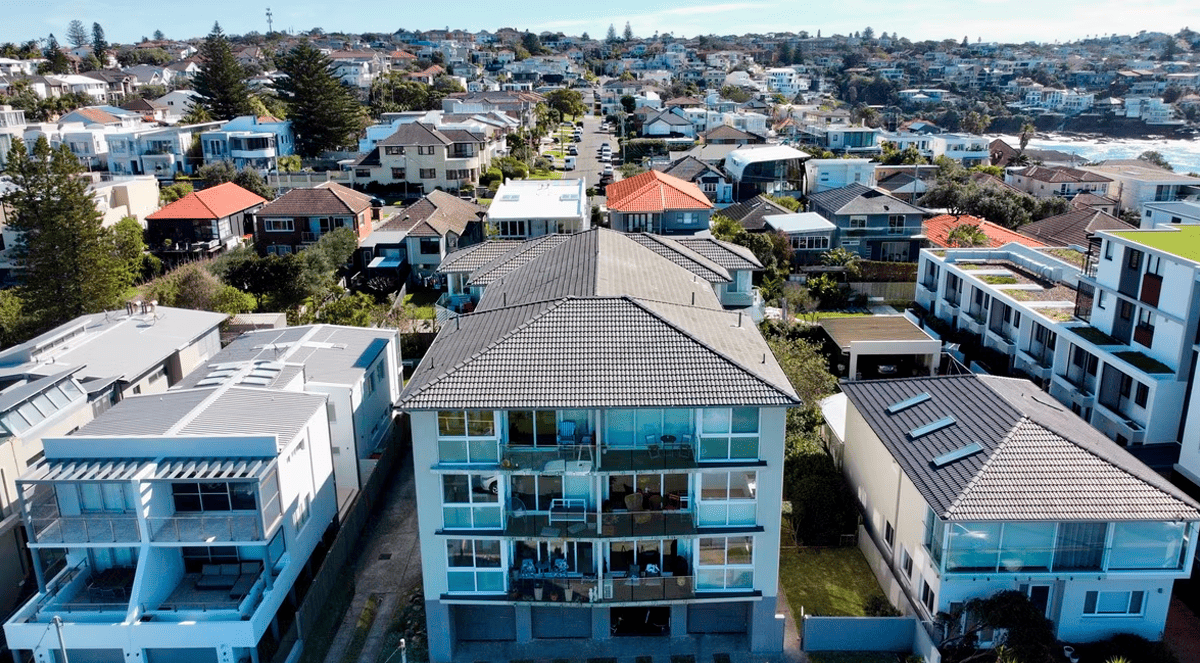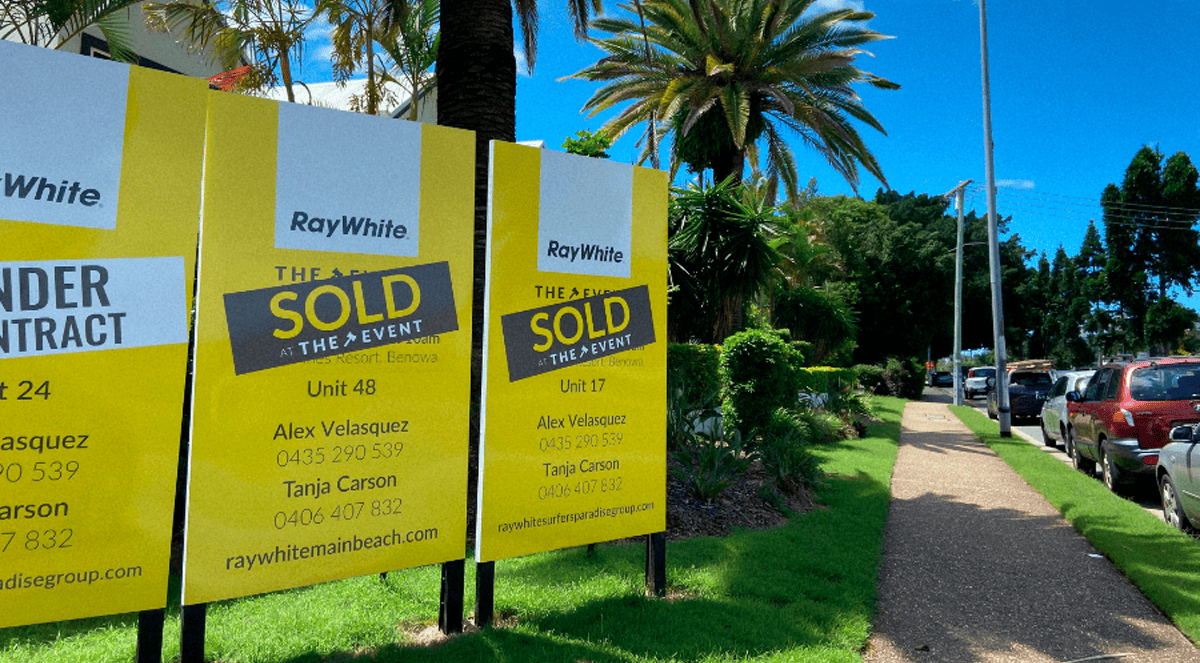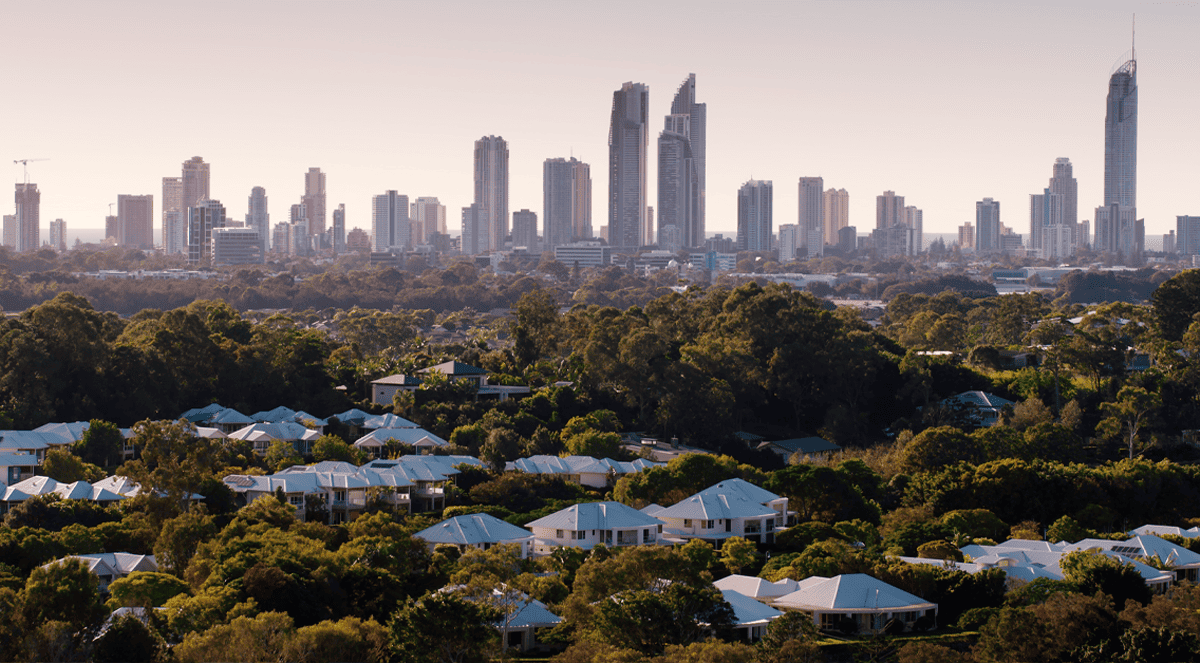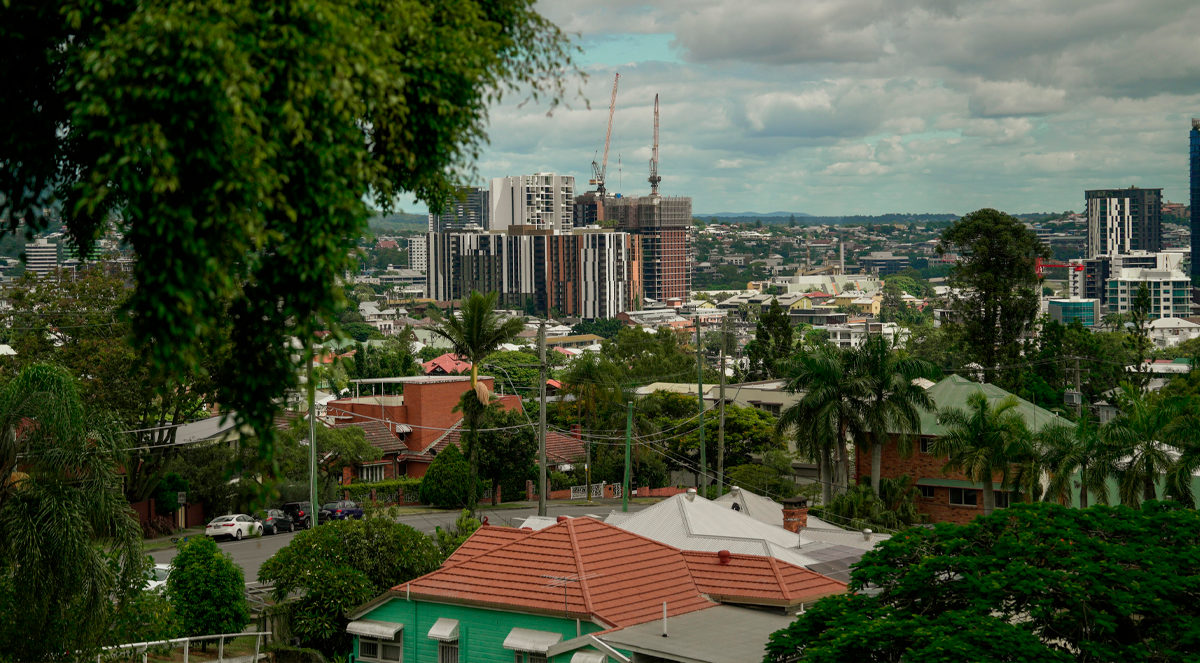Features > Property News & Insights > Market updates
Home approvals rise but delays & costs still undermine supply targets
.png)
KEY POINTS
- New home approvals rose 3.2% to 15,212 in May 2025, but this remains below the 20,000 monthly needed to meet Australia’s 1.2 million homes target by mid-2029
- Industry groups welcome more apartment approvals, but warn red tape, slow planning, and infrastructure delays hinder supply and investor confidence
- The Institute of Public Affairs says it now takes 50% longer to build a freestanding house in Australia than a decade ago, with material costs up 53%
There’s been a modest uptick in the number of new homes approved to be built in Australia, according to the latest data from the Australian Bureau of Statistics.
The rise, especially in approvals for high-density homes like apartments, has been welcomed by industry groups, although they’ve been quick to point out the Federal government is still falling further and further behind in its quest to build 1.2 million homes by mid-2029.
However, optimism that some of the factors that have been holding back housing supply are finally loosening has been tempered by new research, which shows the time and cost to build a detached house in Australia has blown out over the last decade.
The details
The Bureau of Statistics says the total number of dwellings approved rose 3.2% in May 2025 to 15,212 in seasonally adjusted terms.
Approvals are up 6.5% on a year ago.
Daniel Rossi, the Bureau’s Head of Construction Statistics, says the rise was largely driven by apartment approvals which rose 11.3% in May.
Apartment approvals are now 11.9% higher than a year ago.
New South Wales had the largest increase in apartment approvals, with 2,274 apartments approved in May, compared with just 672 in April.
“Private sector (freestanding) houses had a smaller increase, rising 0.5%,” Mr Rossi says.
“Victoria had a strong month for private sector house approvals, with the state up 9.5%.
“The rise in Victoria was mostly offset by a 7.6% drop in Western Australia and a 5.4% fall in New South Wales,” he says.
The Property Council of Australia says the approvals figures are a “step in the right direction, but not enough to meet the scale of the housing challenge.”
“To hit the (National Housing) Accord’s 1.2 million homes target by mid-2029, we need to be approving at least 20,000 new homes every month, and we’re still falling short of that mark,” says the Council’s Policy and Advocacy Director, Matthew Kandelaars.
“Numbers confirm what we’ve long known – we don’t just have a housing crisis, we have a productivity problem,” he says.
“We’re still seeing too many viable projects stalled by red tape, slow planning and environmental approvals, and high development costs.
“Housing markets across the country need more certainty.
“That means better investment settings, faster utility connections, and a ramp-up in skilled workers from home and abroad.”
Mr Kandelaars welcomes the uplift in apartment approvals, but says high-density projects still “remained off the pace needed to meet demand”.
“These should be the workhorses of urban housing supply but instead, apartments are stuck in the slow lane across too many states.”
The reaction from Master Builders Australia has been slightly more positive.
“Over the year to May 2025, 182,894 new homes have been approved across Australia,” Master Builders’ Chief Economist Shane Garrett says.
“This is the biggest total for any 12-month period since early 2023.
“However, if homebuilding were to remain at this pace, it would only deliver just 915,000 new homes in five years - representing a 285,000-home shortfall relative to the National Housing Accord’s target,” he warns.
“Rents are still rising, but the speed at which they are doing so has slowed.
“The gradual increase in the delivery of higher-density homes is partly behind this.
“Conditions for renters could be improved further if we achieve further gains in higher-density home building,” he says.
Time and cost blow-outs
Many apartment developers have complained that big state-government infrastructure projects continue to monopolise construction workers from the housing sector, forcing prices up and making many large developments unviable.
But there are big supply problems at the other end of the market as well.
Most freestanding homes are built by small to medium-sized building firms, and a new study by the Institute of Public Affairs finds that over the past decade, there’s been a huge blow-out in costs and the time it takes to build houses.
“In 2014, building a house took approximately 8.5 months on average,” says Dr Kevin You, a Senior Fellow at the conservative think-tank.
“In 2024, building a house took, on average, approximately 12.7 months.
“This represented an increase of 50% over the last decade.”
Worryingly, this blow-out in building times has accelerated markedly from 2021 onwards.
Western Australia has been the worst offender, with the time taken to build a detached house now 85% longer than in 2014, with South Australia the second worst on 74% and Queensland third on 58%.
Dr You found that over that same time period (2014-2024), the cost of materials needed to build an average-sized house also increased by 53%.
IPA research estimates that the housing supply shortfall in Australia between January 2022 and December 2024 was approximately 179,000, due to what it says was “unprecedented demand attributable to population growth.”
“Net overseas migration to Australia in the period was approximately 1.3 million, which elevated total demand for housing above the level of supply added to the market in every state, except Tasmania,” says Kevin You.
“Concerningly, while demand has been at historically high levels, housing supply has stagnated, as a consequence of supply chain challenges, overregulation in housing and construction, the absorption of resources by large, inefficient government projects, and worker shortage in the construction sector,” he says.
Stay Up to Date
with the Latest Australian Property News, Insights & Education.




.png?width=292&height=292&name=Copy%20Link%20(1).png)
 SIGN UP FOR FREE NEWSLETTER
SIGN UP FOR FREE NEWSLETTER





.jpg?width=1920&height=1080&name=Warning%2c%20You%20Might%20Be%20Facing%20Higher%20Taxes%20Soon%20(1).jpg)





.png?width=1920&height=1080&name=Rate%20Drops%20Signal%20BIGGEST%20Property%20Boom%20in%20DECADES%20(1).png)

.jpg?width=1920&height=1080&name=Labor%20vs%20Liberal%20These%20Housing%20Policies%20Could%20Change%20the%20Property%20Market%20Forever%20(1).jpg)
.jpg?width=1920&height=1080&name=QLD%20Slashes%20Stamp%20Duty%20Big%20News%20for%20Investors%20%26%20Home%20Buyers%20(1).jpg)
.jpg?width=1920&height=1080&name=Trump%20Just%20Slapped%20Tariffs%20%E2%80%93%20Here%E2%80%99s%20What%20It%20Means%20for%20Australia%20(1).jpg)
.jpg?width=1920&height=1080&name=Federal%20Budget%202025%20More%20Debt%2c%20No%20Housing%20%E2%80%93%20Here%E2%80%99s%20What%20You%20Need%20to%20Know%20(1).jpg)
.jpg?width=1920&height=1080&name=Australias%20Housing%20Crisis%20is%20about%20to%20get%20MUCH%20Worse%20(New%20Data%20Warns).jpg)
%20(1).jpg?width=1920&height=1080&name=Australias%20RENTAL%20CRISIS%20Hits%20ROCK%20BOTTOM!%20(2025%20Update)%20(1).jpg)
%20(1).png?width=1920&height=1080&name=Is%20Adelaide%20Still%20a%20Good%20Property%20Investment%20(2025%20UPDATE)%20(1).png)
.jpg?width=1920&height=1080&name=RBA%20Shocks%20with%20Rate%20Cuts!%20What%E2%80%99s%20Next%20for%20Property%20Investors%20(1).jpg)
%20(1).jpg?width=1920&height=1080&name=I%20Predict%20The%20Feb%20Rate%20Cut%20(My%20Price%20Growth%20Prediction)%20(1).jpg)
.png?width=1920&height=1080&name=Why%20Property%20Prices%20Will%20Rise%20in%202025%20Market%20Predictions%20(1).png)
.jpg?width=1920&height=1080&name=Why%20Investors%20Are%20Choosing%20Apartments%20Over%20Houses%202%20(1).jpg)
.jpg?width=1920&height=1080&name=Why%20Rate%20Cuts%20Will%20Trigger%20A%20Property%20Boom%20(1).jpg)
.jpg?width=1920&height=1080&name=Retire%20On%202Million%20With%20One%20Property%20(Using%20SMSF).jpg)
.jpg?width=1920&height=1080&name=4%20Reasons%20Why%20You%20Should%20Invest%20in%20Melbourne%20Now%20(1).jpg)
%20(1).jpg?width=1920&height=1080&name=Old%20Property%20vs%20New%20Property%20(Facts%20and%20Figures%20Revealed)%20(1).jpg)
%20(1).jpg?width=1920&height=1080&name=Will%20The%20New%20QLD%20Govt%20Create%20a%20Property%20Boom%20or%20Bust%20(My%20Prediction)%20(1).jpg)
%20Scott%20Kuru%20(1).jpg?width=1920&height=1080&name=Inflation%20Hits%20Three-Year%20Low%20(Will%20RBA%20Cut%20Rates%20Soon)%20Scott%20Kuru%20(1).jpg)
.jpg?width=1920&height=1080&name=How%20to%20Buy%20Investment%20Property%20Through%20SMSF_%20The%20Ultimate%20Guide%20(1).jpg)
.jpg?width=1920&height=1080&name=Victoria%20Slashes%20Stamp%20Duty%20Melbourne%20Set%20to%20Boom%20Scott%20Kuru%20(1).jpg)
.png?width=1571&height=861&name=Are%20Foreign%20Buyers%20Really%20Driving%20Up%20Australian%20Property%20Prices%20(1).png)
.jpg?width=1920&height=1080&name=The%20Single%20Factor%20That%20Predicts%20Property%20Growth%20Regions%20(1).jpg)
%20Scott%20Kuru%20(1).jpg?width=1920&height=1080&name=My%20Prediction%20On%20Rates%20%26%20Negative%20Gearing%20(Market%20Crash)%20Scott%20Kuru%20(1).jpg)

-1.png?width=1920&height=1080&name=Major%20Banks%20Cut%20Rates%20Will%20RBA%20Follow%20Suit%20(Sept%20Rate%20Update)-1.png)
%20Scott%20Kuru-1.png?width=1920&height=1080&name=Rate%20Cut%20Coming%20What%20New%20Zealands%20Move%20Means%20for%20Australia%20(Sept%20Prediction)%20Scott%20Kuru-1.png)
%20(1).jpg?width=1920&height=1080&name=Buy%20when%20the%20interest%20rates%20are%20high!%20(Why%20you%20must%20buy%20now!)%20(1).jpg)
.jpg?width=1920&height=1080&name=Carms_Revised%20Taxes%20Due%20Aug%209%20YT%20Thumbnail02%20(1).jpg)
.jpg?width=1920&height=1080&name=Carms_Too%20Little%20Too%20Late%20Aug%207%20YT%20Thumbnail01%20(1).jpg)









.jpg?width=1920&height=1080&name=Carms_Rate%20Drop%20In%20July%20Jun%2010%20YT%20Thumbnail02%20(1).jpg)
.jpg?width=1920&height=1080&name=Carms_Own%20a%20Property%20V6%20Jun%205_YT%20Thumbnail%20(1).jpg)









.png?width=1920&height=1080&name=Artboard%201%20(3).png)






.jpg?width=1920&height=1080&name=YT%20thumbnail%20%20(1).jpg)

